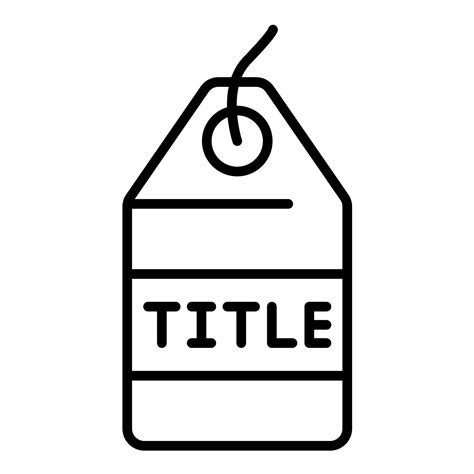
Wrapping a cylinder may seem like a daunting task, especially if you need a precise fit. However, with the right materials and a little practice, you can quickly become a pro at wrapping cylinders. This article will guide you through the steps of wrapping a cylinder, ensuring a smooth and professional finish.

Before you start wrapping, gather your materials. You will need wrapping paper, scissors, tape, and a ruler or measuring tape. Depending on the size of the cylinder, you may also want to use a cutting mat or a large piece of cardboard to protect your work surface. Once you have everything you need, you are ready to begin wrapping.
Start by measuring the circumference of the cylinder. Cut a piece of wrapping paper that is twice as long as the circumference. Next, place the cylinder in the center of the paper and wrap it tightly. Secure the paper with tape, starting in the middle and working your way to the edges. To ensure a clean finish, fold the edges of the paper inward and tape them down. Finally, cut a piece of ribbon or string and tie it around the center of the cylinder to add a decorative touch. With these simple steps, you can now confidently wrap any cylinder with ease.
Cut to the Correct Length
To ensure that the wrapping paper fits snugly around the cylinder, it’s crucial to cut it to the correct length. Follow these detailed steps:
Measuring the Circumference
Measure the circumference of the cylinder using a measuring tape or string. This will give you the length of the wrapping paper needed to wrap around the cylinder once.
Determining the Total Length
Based on the circumference measurement, determine the total length of wrapping paper required. This will depend on how many times you want to wrap the paper around the cylinder. Typically, a minimum of 2-3 layers of wrapping is recommended for adequate coverage.
Adding Overlap
Add an extra 2-3 inches (5-8 cm) to the total length for overlap at the starting and ending points of the wrapping. This will help create a secure and professional-looking finish.
Calculating the Paper Length
Multiply the circumference by the number of desired layers and add the overlap allowance to determine the total length of wrapping paper needed.
| Formula |
Description |
| Length = Circumference x Layers + Overlap |
Calculate the total length of wrapping paper required
For example, if the cylinder has a circumference of 15 inches (38 cm) and you want 3 layers of wrapping with a 2-inch (5 cm) overlap, the length of wrapping paper needed is:
“`
Length = 15 inches x 3 layers + 2 inches = 47 inches (119 cm)
“`
Materials
- Wrapping material (e.g., paper, fabric, plastic)
- Adhesive tape or other securement method
Steps
1. Secure the Starting Point
Begin by applying a strip of adhesive tape to one end of the wrapping material. This tape will serve as the anchor point for the wrap.
2. Align the Material
Place the wrapping material against the cylinder, with the edge aligned along the base.
3. Wrap the Cylinder
Start wrapping the material around the cylinder, making sure to overlap each layer slightly.
4. Maintain Tension
As you wrap, keep the material taut by pulling it gently. This will help prevent wrinkles and ensure a secure wrap.
5. Tightly Wrap the Cylinder
For a particularly secure wrap, apply multiple layers of material, overlapping each layer by 50% or more. Use a stretching motion as you wrap to achieve a tight fit. Consider using a heat gun or hairdryer to shrink-wrap the material for added strength.
6. Secure the End
Once the cylinder is wrapped, secure the end of the material with adhesive tape or another securement method. Trim any excess material.
Cut and Fold Exceeding Paper
On occasion, you may encounter gift items, such as statues or extravagant wine bottles, that require additional paper to cover them.
To wrap these items, you can create a ‘sleeve’ of paper to slide around them.
To create a paper sleeve:
- Measure and cut the paper: Cut the paper to match the length of the item, plus about two inches extra for overlap. Measure the circumference of the item and add six inches to determine the width of the paper.
- Fold the paper in half lengthwise, so that the excess width is doubled.
- Cut notches along the folded edge: Starting about one inch from the folded edge, cut a series of notches about one inch apart. The notches should be about half the depth of the doubled-over paper.
- Unfold the paper: Unfold the paper so that the notches are on the outside.
- Slide the paper around the item: Slide the paper around the item, aligning the edges of the paper with each other. The notches will allow the paper to expand to fit snugly around the item.
- Overlap the edges of the paper: Overlap the two edges of the paper by a few inches. Secure with tape.
- Secure the excess paper: Fold the excess paper at the top and bottom of the item over the edges. Secure with tape. You may also want to add a ribbon or bow to decorate the gift.
Secure the End
To ensure a secure and tidy finish, follow these steps:
- Overlapping Edges: Fold the edges of the paper over each other, creating a 1-2 inch overlap. This overlap should be wide enough to secure the paper in place.
- Crease the Folded Edges: Use your fingers or a bone folder to press down firmly on the folded edges, creating a sharp crease. This will help keep the edges in place and prevent them from unraveling.
- Apply Adhesive: Apply a thin layer of adhesive to the underside of one of the overlapping edges. Avoid using too much adhesive, as it can ooze out and create a mess.
- Align the Edges: Carefully align the overlapping edges and press them together, ensuring that the adhesive bonds them securely.
- Hold and Flatten: Hold the edges in place for a few minutes to allow the adhesive to set. Use your hands or a flat object to flatten the overlap, creating a smooth and even surface.
- Repeat for Other Side: Repeat the above steps on the other side of the cylinder to secure the opposite end of the paper.
- Check for Gaps and Smooth: Inspect the wrapped cylinder for any gaps or loose edges. If necessary, apply additional adhesive or touch up any areas that need more smoothing.
- Allow to Dry: Let the wrapped cylinder dry completely before handling it further. This will ensure that the adhesive has set and the paper is securely in place.
1. Measure and Cut the Wrapping Paper
Measure the circumference of the cylinder and add 2 inches. Cut a piece of wrapping paper to this length. The width of the paper should be twice the height of the cylinder plus 2 inches.
2. Fold the Paper in Half
Fold the paper in half lengthwise, aligning the edges. Crease the fold.
3. Wrap the Paper Around the Cylinder
Place the cylinder in the center of the paper, with the folded edge at the top. Bring the two ends of the paper around the cylinder and overlap them by 1 inch. Secure the overlap with tape.
4. Fold the Excess Paper Over the Ends
Fold the excess paper over the ends of the cylinder, creating a neat finish. Secure the folds with tape.
5. Add Ribbons or Bows
Tie a ribbon or bow around the center of the wrapped cylinder. This will add a decorative touch.
6. Use Matching Tape
For a professional finish, use tape that matches the color of the wrapping paper.
7. Trim Excess Tape
Trim any excess tape that is visible.
8. Smooth Out the Paper
Gently smooth out any wrinkles or creases in the wrapping paper.
9. Protect the Wrapped Cylinder
If you are transporting the wrapped cylinder, protect it by placing it in a box or bag.
Additional Tips for a Professional Finish
10. Double Wrap for Extra Strength
To make the wrapped cylinder more durable, double wrap it with another layer of paper. This is especially helpful for heavy or fragile items.
| Step |
Description |
| 1 |
Wrap the cylinder once as usual. |
| 2 |
Cut a second piece of paper to the same size as the first. |
| 3 |
Fold the second piece of paper in half and place it over the first layer. |
| 4 |
Secure the second layer with tape. |
How to Wrap a Cylinder
Wrapping a cylinder can be a challenging task, but it is possible to achieve a neat and professional-looking finish with a little practice. Here are the steps on how to wrap a cylinder:
1. Measure the circumference and height of the cylinder. This will help you determine the amount of wrapping paper you need.
2. Cut a piece of wrapping paper that is twice the circumference of the cylinder plus 2 inches. The length of the paper should be the height of the cylinder plus 4 inches.
3. Place the cylinder in the center of the wrapping paper. Fold the two long edges of the paper over the cylinder and crease them. Then, fold the two short ends of the paper over the cylinder and crease them.
4. Use tape to secure the paper in place. Start by taping the two long edges of the paper together at the top of the cylinder. Then, tape the two short ends of the paper together at the bottom of the cylinder.
5. To finish wrapping the cylinder, fold the excess paper at the top and bottom of the cylinder over the cylinder and tape it in place.
People Also Ask About How to Wrap a Cylinder
What is the best way to wrap a cylinder if I don’t have any tape?
If you don’t have any tape, you can use glue or a glue stick to secure the wrapping paper in place.
How can I make my wrapped cylinder look more professional?
To make your wrapped cylinder look more professional, you can use a ribbon or bow to decorate it.
What are some tips for wrapping a large cylinder?
When wrapping a large cylinder, it is helpful to use two people. One person can hold the cylinder in place while the other person wraps the paper around it.
|